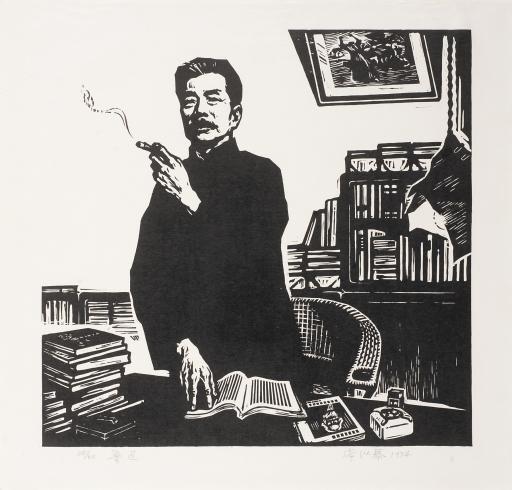Lu Xun, Li Yitai
Artwork Overview
Li Yitai, artist
born 1944
Lu Xun,
1974
Where object was made: China
Material/technique: woodcut; Chinese paper
Dimensions:
Image Dimensions Height/Width (Height x Width): 455 x 470 mm
Sheet/Paper Dimensions (Height x Width): 535 x 558 mm
Image Dimensions Height/Width (Height x Width): 17 15/16 x 18 1/2 in
Sheet/Paper Dimensions (Height x Width): 21 1/16 x 21 15/16 in
Mat Dimensions (Height x Width): 30 x 30 in
Image Dimensions Height/Width (Height x Width): 455 x 470 mm
Sheet/Paper Dimensions (Height x Width): 535 x 558 mm
Image Dimensions Height/Width (Height x Width): 17 15/16 x 18 1/2 in
Sheet/Paper Dimensions (Height x Width): 21 1/16 x 21 15/16 in
Mat Dimensions (Height x Width): 30 x 30 in
Credit line: Museum purchase
Accession number: 2001.0022
Not on display
If you wish to reproduce this image, please submit an image request





